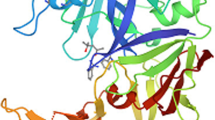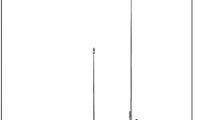Abstract
Vulvovaginal candidiasis called by its name Vellai Noi as per Siddha terminology is considerably the second most common cause of vaginal inflammation in the women of middle-aged group. Candida albicans are prioritised top among other pathogens in mediating vaginal inflammation and its related symptoms. Candida albicans exerts its virulence by secreting the enzyme known as secreted aspartyl proteinases (SAP) which allows hassle-free adherence and growth of the opportunistic pathogen. Hence, drugs that selectively inhibit this enzyme may act as a novel candidate drug in halting the growth and invasion of Candida albicans. Siddha formulations have century’s old credit of managing infectious pathogens. The greater ideology of siddha practice is to adequately strengthen the host immunity and resistance towards infections. In the present investigation, about twelve phytocompounds have been retrieved from the siddha formulation Parangipattai Chooranam and the same were subjected to molecular docking analysis against SAP enzyme target along with standard fluconazole. Results of the present in silico investigation signify that the compounds such as beta-sitosterol, afzelin, apigenin, quercetin and rosmarinic acid ranked first by demonstrating potential binding affinity with active amino acid residues by occupying the respective binding sites (Asp 32, 83 Lys, Asp86, Gly220, Thr221 and Thr222) in comparison with standard drug fluconazole. Similar binding behaviour was exhibited by other compounds like kaempferol, carnosic acid and engeletin (Asp 32, Gly85, Asp86, Asp218, Gly220, Thr221 and Thr222) against the target amino acids. Vicenin exhibited best binding affinity of − 12.07 kcal/mol followed by beta-sitosterol (− 9.29 kcal/mol), engeletin (− 9.04 kcal/mol), afzelin (− 8.07 kcal/mol) and 4-O-caffeoylquinic acid (− 7.85 kcal/mol) in comparison with fluconazole (− 7.32 kcal/mol). From the results of the present study, it was concluded that the phytochemicals present in the siddha formulation Parangipattai Chooranam reveal significant antifungal activity by inhibiting the target enzyme (SAP) and thereby considered an excellent drug of choice for the clinical management of vaginal candidiasis.






Similar content being viewed by others
References
Martin Lopez, J. E. (2015). Candidiasis (vulvovaginal). BMJ Clinical Evidence, 2015:0815.
Yano, J., Sobel, J. D., Nyirgesy, P., Sobel, R., Valerie, L. W., Yu, Q., Noverr, M. C., & Fidel, P. L. (2019). Current patient perspectives of vulvovaginal candidiasis: Incidence, symptoms, management and post-treatment outcomes. BMC Women’s Health, 19(1), 48. https://doi.org/10.1186/s12905-019-0748-8
Nobile, C. J., & Johnson, A. D. (2015). Candida albicans biofilms and human disease. Annual Review of Microbiology, 69, 71–92. https://doi.org/10.1146/annurev-micro-091014-104330
Spampinato, C., & Leonardi, D. (2013). Candida infections, causes, targets, and resistance mechanisms: Traditional and alternative antifungal agents. BioMed Research International, 204–237.https://doi.org/10.1155/2013/204237
Staniszewska, M., Bondaryk, M., Piłat, J., Siennicka, K., Magda, U., & Kurzatkowski, W. (2012). Virulence factors of Candida albicans. Przeglad Epidemiologiczny, 66(4), 629–633.
Monod, M., Togni, G., Hube, B., & Sanglard, D. (1994). Multiplicity of genes encoding secreted aspartic proteinases in Candida species. Molecular Microbiology, 13, 357–368.
Meng, X. Y., Zhang, H. X., Mezei, M., & Cui, M. (2011). Molecular docking: A powerful approach for structure-based drug discovery. Current Computer-Aided Drug Design, 7(2), 146–157. https://doi.org/10.2174/157340911795677602
Krishna Veni, R., & Meenambiga, S. S. (2019). In-silico analysis of endophytic fungal metabolites against secreted aspartic proteinase enzyme of Candida albicans. Research Journal of Pharmacy and Technology, 12(7), 3495–3500.
Thas, J. J. (2008). Siddha medicine-background and principles and the application for skin diseases. Clinics in Dermatology, 26(1), 62–78.
KuppusamyMudaliar, K. N., & Uthamarayan, K. S. (1998). Siddha Vaithiya Thirattu (1st ed., pp. 221–222). Chennai: Canaan Press.
Trott, O., & Olson, A. J. (2010). AutoDock Vina: Improving the speed and accuracy of docking with a new scoring function, efficient optimization, and multithreading. Journal of Computational Chemistry, 31(2), 455–461. https://doi.org/10.1002/jcc.21334
Stefano, F., Ruth, H., Michael, E. P., Michel, F. S., & David, S. G. (2016). Computational protein-ligand docking and virtual drug screening with the AutoDock suite. Nature Protocols, 11, 905–919.
Osterberg, F., Morris, G. M., Sanner, M. F., Olson, A. J., & Goodsell, D. S. (2002). Automated docking to multiple target structures: Incorporation of protein mobility and structural water heterogeneity in AutoDock. Proteins, 46, 34–40.
Morris, G. M. (1998). Automated docking using a Lamarckian genetic algorithm and an empirical binding free energy function. Journal of Computational Chemistry, 19, 1639–1662.
Abirami, G., Alexpandi, R., Durgadevi, R., Kannappan, A., & Veeraravi, A. (2020). Inhibitory effect of morin against Candida albicans pathogenicity and virulence factor production: An in vitro and in vivo approaches. Frontiers in Microbiology, 11, 1–16. https://doi.org/10.3389/fmicb.2020.561298
d’Enfert, C., Kaune, A. K., Alaban, L. R., et al. (2021). The impact of the fungus-host-microbiota interplay upon Candida albicans infections: Current knowledge and new perspectives. FEMS Microbiology Reviews, 45(3), fuaa060. https://doi.org/10.1093/femsre/fuaa060
Chen, H., Zhou, X., Ren, B., & Cheng, L. (2020). The regulation of hyphae growth in Candida albicans. Virulence, 11(1), 337–348. https://doi.org/10.1080/21505594.2020.1748930
Houst, J., Spizek, J., & Havlicek, V. (2020). Antifungal drugs. Metabolites., 10(3), 106. https://doi.org/10.3390/metabo10030106
Ekor, M. (2014). The growing use of herbal medicines: Issues relating to adverse reactions and challenges in monitoring safety. Frontiers in Pharmacology, 4, 177. https://doi.org/10.3389/fphar.2013.00177
Jadhav, P., Kapoor, N., Thomas, B., Lal, H., & Kshirsagar, N. (2012). Antiviral potential of selected Indian medicinal (ayurvedic) plants against herpes simplex virus 1 and 2. North American Journal of Medical Sciences, 4(12), 641–647. https://doi.org/10.4103/1947-2714.104316
Pinzi, L., & Rastelli, G. (2019). Molecular docking: Shifting paradigms in drug discovery. International Journal of Molecular Sciences, 20(18), 4331. https://doi.org/10.3390/ijms20184331
Sivaraman, D., Pradeep, P. S., Sundar Manoharan, S., Ramachandra Bhat, C., Leela, K. V., & Venugopal, V. (2020). Revealing potential binding affinity of FDA approved therapeutics targeting main protease (3CLpro) in impairing novel coronavirus (SARS-CoV-2) replication that causes COVID-19. Coronaviruses, 1, 98–107. https://doi.org/10.2174/2666796701999200701122817
Sivaraman, D., & Pradeep, P. S. (2020). Exploration of bioflavonoids targeting dengue virus NS5 RNA dependent RNA polymerase: In silico molecular docking approach. Journal of Applied Pharmaceutical Science, 10(5), 16–22. https://doi.org/10.7324/JAPS.2020.10503
Patra, A. K. (2012). An overview of antimicrobial properties of different classes of phytochemicals. Dietary Phytochemicals and Microbes, 1–32.https://doi.org/10.1007/978-94-007-3926-0_1.
Acknowledgements
We wish to acknowledge Sri Sairam Siddha Medical College & Research Centre, Chennai, Tamil Nadu, India, and The Noble research solutions, Chennai, Tamil Nadu, India, for their support.
Author information
Authors and Affiliations
Corresponding author
Additional information
Publisher's Note
Springer Nature remains neutral with regard to jurisdictional claims in published maps and institutional affiliations.
Rights and permissions
About this article
Cite this article
Pushkala, V.P., Sulekha, S.M.P., Mathukumar, S. et al. Molecular Docking Analysis of Siddha Formulation Parangipattai Chooranam Against Vaginal Candidiasis. Appl Biochem Biotechnol 194, 1039–1050 (2022). https://doi.org/10.1007/s12010-022-03813-y
Accepted:
Published:
Issue Date:
DOI: https://doi.org/10.1007/s12010-022-03813-y




